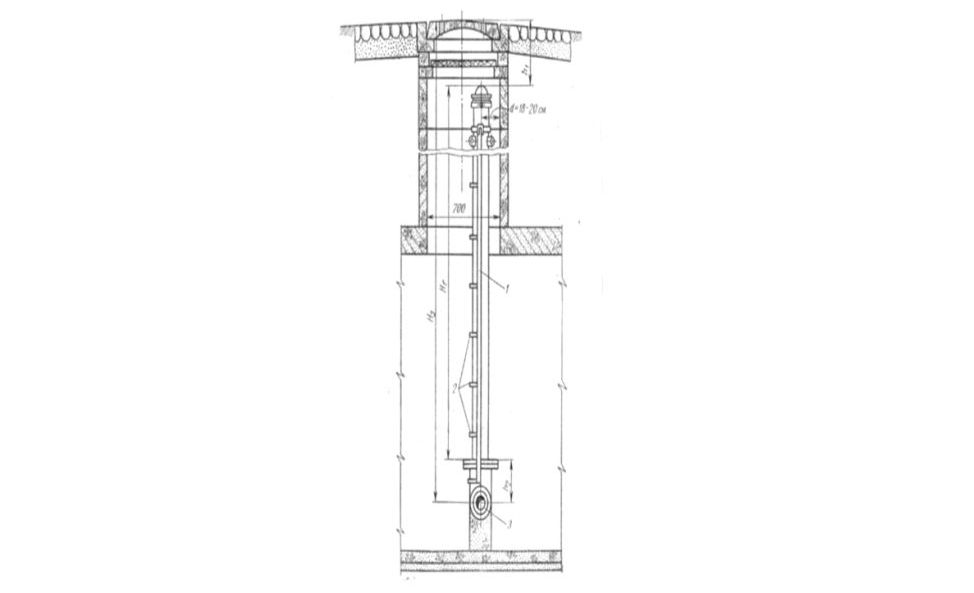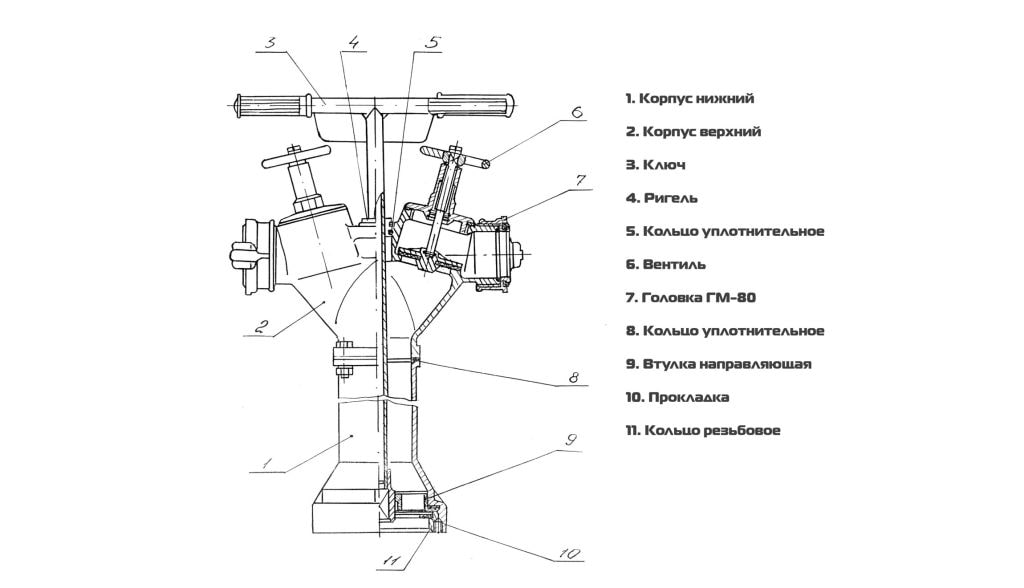Fire hydrant underground and aboveground, fire hydrant.
Fire hydrants are designed to take water from the water supply network for fire needs
Several types of fire hydrants are used on water supply networks, the most widespread of which is the underground Moscow-type hydrant PG-5 (Fig. 1). The hydrant has a shutter in the form of a ball hollow valve. In the middle part of it there is a rubber sealing ring, which in the closed position of the hydrants is tightly pressed against the seat and blocks the water supply.
A small hole at the bottom of the body is designed to drain water from the hydrant after it has been running. When the rod rotates, which is connected to the spindle by a coupling, the unloading valve opens. Water through it fills the inner space of the hydrant body and. Further rotation opens the ball valve.
Moscow type hydrant PG-5
(fig. 1)
1 - case; 2 - cover; 3 - barbell; 4 - spindle; 5 - shutter (valve)
The hydrant GOST 8220-62 (Fig. 2) consists of a cast-iron body, a gate with a streamlined valve, a spindle of a coupling, a rod and a nipple with a cover.
An important characteristic is the amount of water hammer that occurs when the hydrant is opened and closed. To prevent hydraulic shocks, a streamlined valve is located in the shut-off unit of the hydrant, which eliminates the possibility of stalling cavitation.
There is no hydrant relief valve. To reduce efforts when opening the hydrant, the spindle thread pitch has been reduced by 2.5 times. There is no danger of water freezing.

Underground fire hydrant
Underground hydrants are installed in water wells so that the distance between them does not exceed 150 m and that they are located no closer than 5 m from the walls of buildings. The greatest distance from the hydrants to the buildings they serve should not exceed 150m with low pressure fire water pipelines. (fig. 3)

Installation of an underground fire hydrant in a water well (1 - hydrant; 2 - brackets; 3 - water supply)
Water supply lines with fire hydrants are located along the driveways no more than 2.5 m from the edge of the carriageway.
On water lines with a diameter of more than 500 mm, hydrants are not installed due to the complexity of installing wells. In these cases, sometimes accompanying lines of a smaller diameter are laid, on which hydrants are installed. For water sampling during fire extinguishing from underground hydrants, fire columns are used (Figure 12.4). The fire column consists of a riser, in the lower part of which there is a threaded connection for connecting to a hydrant, and a body with two nozzles equipped with connecting heads for connecting fire hoses. The openings of the branch pipes are closed with gates. Inside the column there is a tubular key with a coupling, which is designed to be connected to the hydrant bar when opening and closing its gate.
Fire column device

How does a fire hydrant work
If you need to use a fire hydrant to draw water from a fire hydrant, then this fire fighting equipment will help you safely open the fire hydrant rod without having to go down the well.
Using the key on the column, you can adjust the outlet pressure from the nozzles. Water withdrawal is possible up to 70 liters per second, depending on the network pressure. The minimum working pressure is 1MPa. Through the outlet nozzles, the column will provide the supply of extinguishing agent for the needs of extinguishing into the hose lines.






